Gyeongju in Gyeongsangbuk-do Province was once the capital of the ancient Korean Kingdom of Silla (57 BCE – 935) for about one millennium, and contains a great wealth of heritage sites and relics that reflect its remarkable cultural achievements. The remaining historical and cultural heritage led to the city’s registration as a UNESCO World Heritage Site, under the name of the Gyeongju Historic Areas, in 2000. Tangible evidences of Silla’s cultural glory include Bulguksa Temple, which was founded to represent the ideal world of Buddhism which Silla’s people aspired to, Seokguram, a manmade grotto admired for its unique architectural structure and outstanding sculptural works, and Cheomseongdae, which is regarded as Asia’s oldest extant astronomical observatory.
The royalty and aristocracy of Silla left behind large tombs in and around today’s Gyeongju. Archaeologists discovered priceless treasures in some of these tombs, such as the image of a heavenly horse painted on a piece of white birch bark (Cheonmachong Tomb), and gold crowns lavishly decorated with exquisite and advanced skills (Geumgwanchong Tomb). Apart from the fabulous archaeological discoveries, these ancient tombs clustered in downtown Gyeongju create fantastic and fascinating landscapes in themselves.
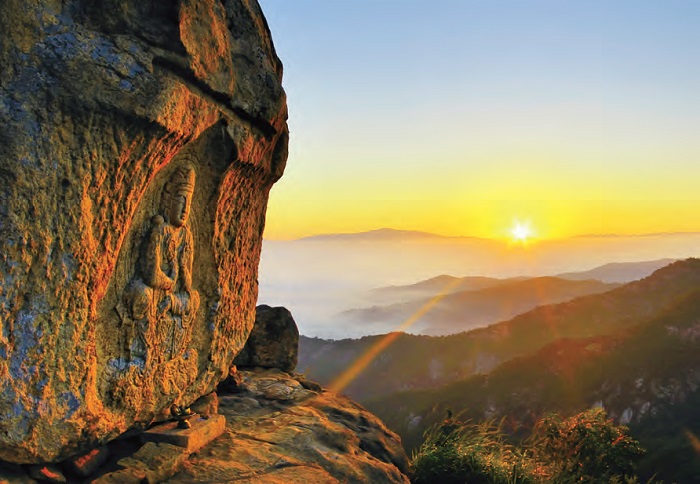
Namsan Mountain in Gyeongju. A seated Buddha image carved on a rock face on Namsan Mountain
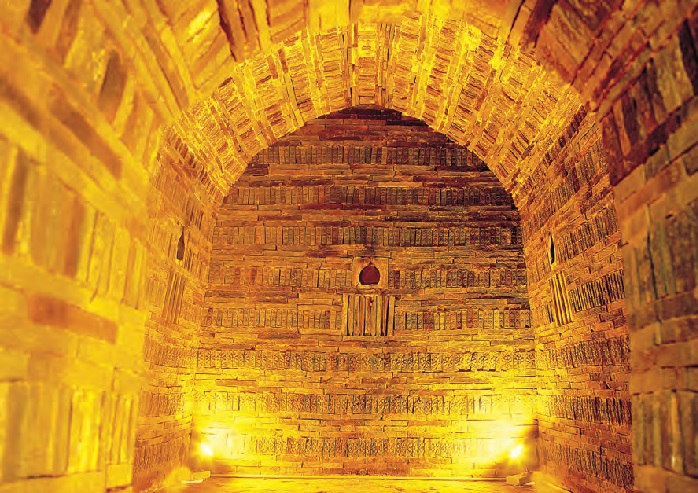
Tomb of King Muryeong (Gongju, Chungcheongnam-do). The burial chamber of the tomb of King Muryeong, the 25th ruler of Baekje, and his consort shows the influence of the Chinese Southern Dynasties.
Silla Buddhists in the 8th century made a great temple bell now known to be the “Sacred Bell of Great King Seongdeok.” As well as its imposing size, the bell is known for having several unique devices designed to help produce a clear, long lingering sound when struck, such as the “sound pipe”, and elaborate carvings decorating the outer surface of its body. Some of the most valuable treasures of Silla Buddhism, stone images and pagodas in particular, can be seen in Namsan, making Gyeongju’s guardian mountain one of the holiest places of Korean Buddhism.
Gongju and Buyeo, Capitals of Baekje
Gongju and Buyeo are two cities in Chungcheongnam-do Province, each of which served as the capital city of the ancient Korean Kingdom of Baekje during the period from the late 5th to the 7th century. The cultural achievements of Baekje in this period are best represented by the Tomb of King Muryeong and other ancient tombs in Gongju, Nakhwaam Rock, and Gungnamji Pond in Buyeo.
The Ancient Tombs in Songsan-ri, Gongju consist of seven tombs of Baekje’s royalty including that of King Muryeong and his consort. Archaeologists discovered inside the tomb a wealth of precious burial objects preserved in near original condition that now provide important clues to the lifestyle of Baekje’s people. Buyeo, which was the last capital of Baekje for 123 years until 660, also contains valuable relics dating from the cultural heyday of a Kingdom that exerted a powerful influence on neighboring countries. Other Baekje heritage sites preserved in the city, including Nakhwaam Rock, which is connected with the last days of Baekje, and Gungnamji containing the features of a Baekje palace garden, have now become major tourist attractions.
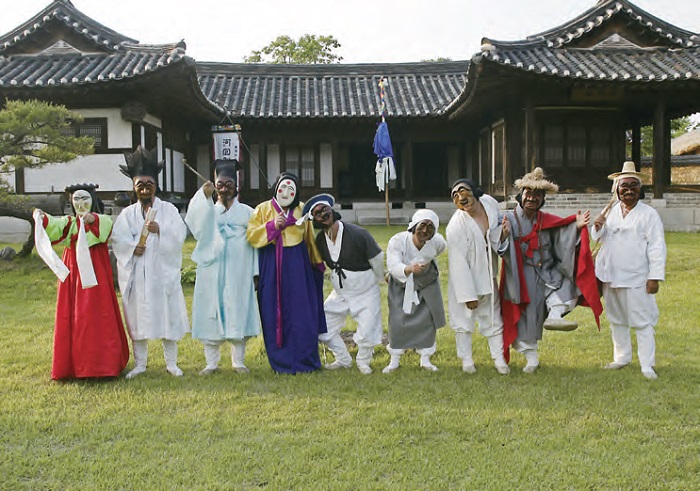
Hahoe Byeolsingut Tallori. A traditional mask dance preserved in Hahoe Village in Andong that satirizes the corrupt ruling elite of Joseon society
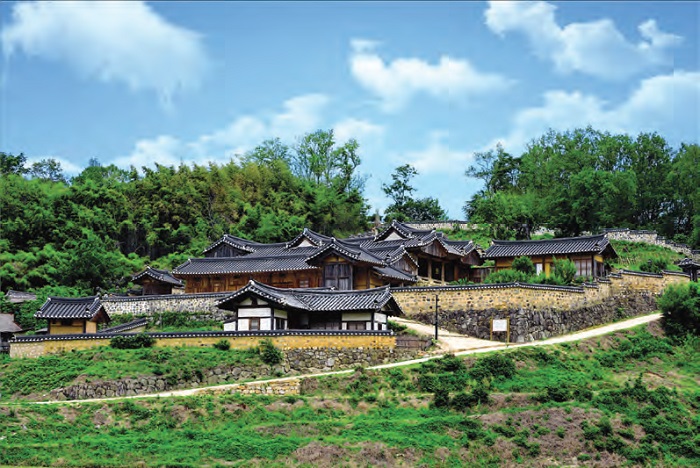
Yangdong Village in Gyeongju. A village that has maintained the traditional lifestyle for over 500 years
Hahoe Village in Andong and Yangdong Village in Gyeongju
In 2010, two old villages, Hahoe in Andong and Yangdong in Gyeongju, were inscribed on the UNESCO World Heritage Sites, under the title “Historic Villages of Korea.” The villages were created and developed by a few influential aristocratic families of Joseon, and still preserve the original living conditions in which the houses and their environments were built hundreds of years ago. Each village was established in a site chosen according to the traditional principles of feng shui, i.e. "Mountain Behind and Water in Front", and consisted of dwelling houses with family shrines, communal academies, pavilions. It also had farming fields around it which provided the villagers with all the basic necessities they needed.
Hahoe Village in Andong was formed in the 17th century when some families of the Pungsan Ryu Clan settled there. The village, now containing about 450 traditional tile-roofed or thatched houses, is surrounded by the Nakdonggang River, with pine trees crowding the riverbank, creating a beautiful rural landscape. The village is also connected with a traditional performance, byeolsingut tallori, which is performed to invoke divine help for the village’s safety and prosperity, and seonyu julbullori, a local firework festival held at riverside beaches.
The other historical village, Yangdong, located 16km northeast of Gyeongju, has a history of about 500 years. It consists of about 160 traditional houses, both tile-roofed and thatched, and is surrounded by attractive natural surroundings, shallow valleys and gentle hills. The village is prized not only for its attractive old houses but also for other heritage that preserve the influence of Confucian ideology and ancient customs.
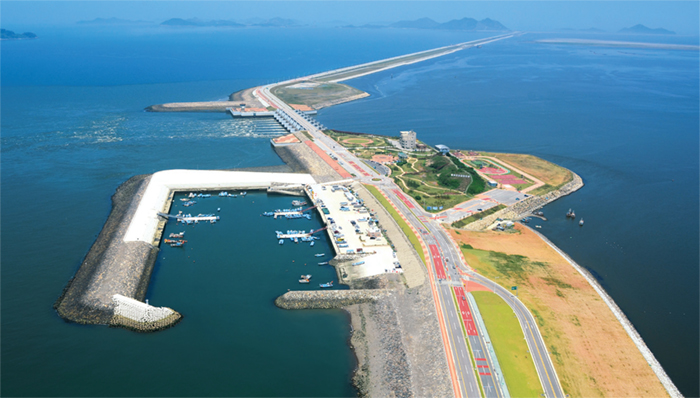
Saemangeum Embankment. South Korea constructed a 33.9km–long seawall that connects Gunsan to Buan in Jeollabuk-do Province, turning wetland and sea into reclaimed land. Saemangeum was certified by Guinness World Records as the longest man-made sea barrier in the world. The project added a total area of 409 square kilometers to the Korean Peninsula.
